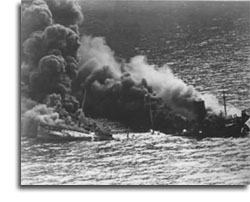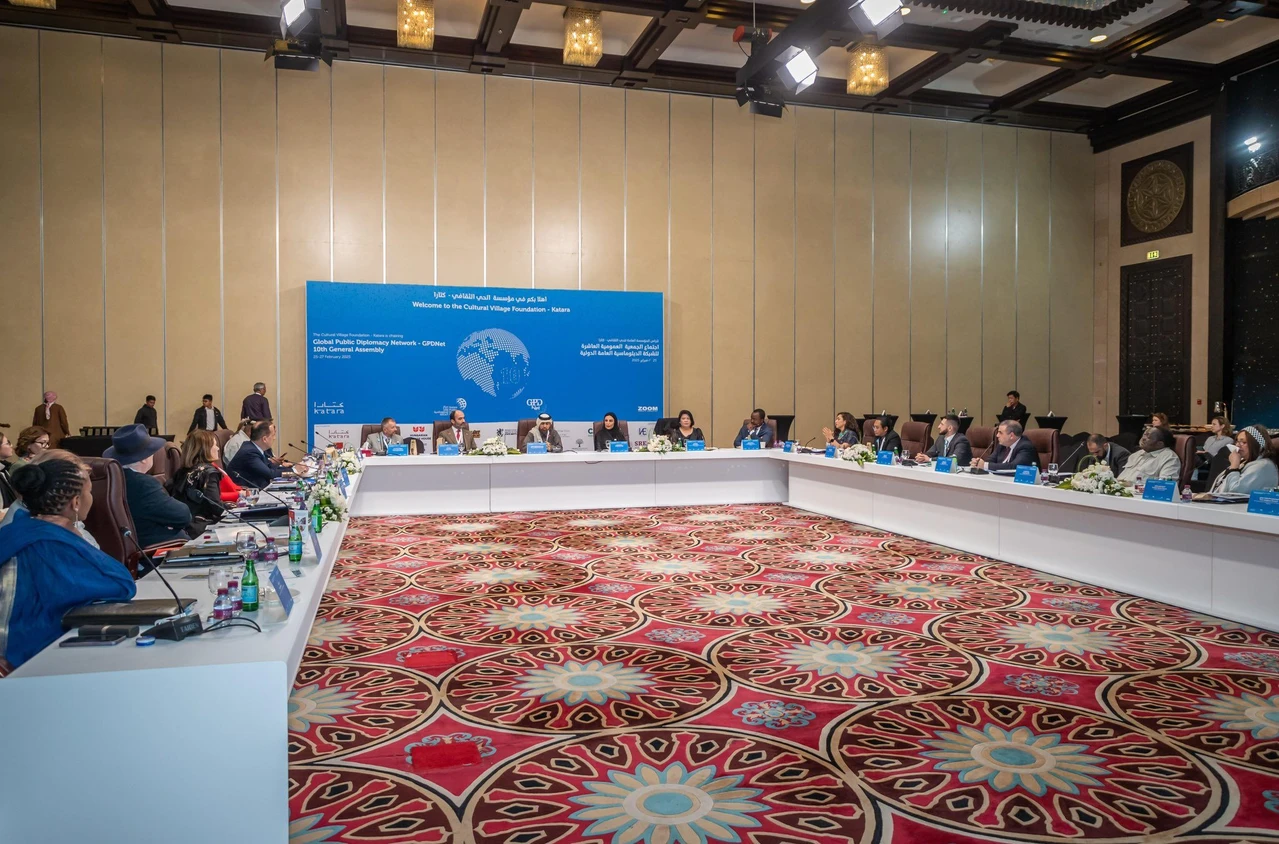From Munich to Pearl Harbor: FDR’s Progress Towards War

Moyra Schaufler
In the years leading up to America’s entry into World War II (WWII), the actions of President Franklin Delano Roosevelt (FDR) demonstrate his instinct for eventual American participation in the war, combined with his practical determination to keep the country neutral until both the Doing so would support both Congress and the public. Beginning with the Munich Conference and the ensuing crisis of German appeasement, the President revealed his misgivings about Adolf Hitler’s Germany while still attempting to maneuver his country through an economic crisis and the isolationist tendencies that marked that moment in American history. When the war began with Hitler’s defiance of the Munich accords and the Nazi invasion of Poland in September 1939, Roosevelt responded by showing a willingness to take steps to protect the western hemisphere, but still insisted on American neutrality. When Hitler launched the Blitzkrieg, or “Blitzkrieg,” against Western Europe in the spring of 1940, Roosevelt immediately responded by attempting to mobilize American public opinion toward support for the allied powers, consisting of Britain, France, and the Soviet Union, among other smaller countries .
The American President’s consistent efforts to help the Allies while staying out of the war resulted in the Lend-Lease Act, approved by Congress in March 1941. The introduction of Lend-Lease increased the American presence in the North Atlantic. The regular presence of United States (US) ships unsettled the German naval forces in the region and eventually led to the USS Greer Incident and beginning of an undeclared naval war between the USA and Germany. Finally, the overall progress in US preparation for entry into World War II culminated with the Japanese attack on Pearl Harbor on December 7, 1941. The surprise attack on US soil prompted President Roosevelt to urge Congress to declare war on Japan and ushering in a new era of American involvement in global affairs.
A map is helpful in demonstrating America’s complicated path to World War II because it can clearly illustrate how global catastrophes lead to clear US responses, in which American diplomats and politicians are directly involved. Overall, the map shows how Roosevelt and the United States responded with increasing aggression, eventually leading to complete support and allegiance to the Allies. Each dot on this interactive Google map represents an event or significant change in American foreign policy that led to entry into World War II. As can be seen from the map, the most important events happened on both sides of the Atlantic Ocean, with the exception of the attack on Pearl Harbor. Apart from that, other events occurred signaling another war on the horizon and accelerated US involvement, which are not shown on the map. For example, Hitler’s 1935 announcement of rearmament in violation of the Treaty of Versailles and FDR’s September 1939 invocation of the neutrality laws in response to the start of World War II do not appear, but are nonetheless important for understanding the rationale and processing the United States went through to prepare for war.
The first point on the map represents the Munich Conference on September 28, 1938 in Munich, Germany. In his book entitled From colony to superpower George Herring cites this conference and the later well-known Munich crisis as an important turning point in Roosevelt’s view and opinion of Hitler’s Germany. Herring says: “Munich … convinced Roosevelt that Hitler was responsible for Europe’s drift into war and possible world domination. The President was no longer casually confident that the British and French would be victorious in the event of war” (Herring, 515). As this quote shows, President Roosevelt was troubled by the idea of German appeasement in Munich and by Hitler’s apparent intentions to take the European continent to war. Herring goes on to explain how Munich has forced the President to realize that his country is no longer secured by its two-ocean buffer should Hitler decide to use military might to harm the United States (Herring, 515). Hitler’s invasion of Poland in 1939 only increased Roosevelt’s growing fears.
On September 1, 1939, Hitler invaded Poland, beginning the second great European war. The location marker on the map is in Wielun, Poland, because the town was the first to experience Nazi bombing. Corresponding The Atlantic, Poland officially surrendered to the Germans in October 1939 after losing over 60,000 soldiers and thousands of civilians (Alan Taylor). Immediately after the invasion, on September 3, Roosevelt gave a fireside chat entitled “On the European War.” On that radio show, the President encouraged his listeners to remember: “You must master from the outset one simple but unchanging fact in modern foreign relations between nations. When the peace is broken somewhere, the peace of all countries everywhere is in danger.” In this case, the President acknowledged the US abstinence from involvement in the European war, but emphasized how interconnected the world is in the new era and that country could no longer remain unaffected by the conflict.
The next significant transition in this saga occurred in late September 1939, when the US attended a conference in Panama City with other Latin American countries, where they discussed neutrality, hemispheric security, and economic cooperation related to the war (Sanders, 232). . The most significant agreement produced at the conference was the “Declaration of Panama,” in which the participating countries established a “zone of neutrality” that stretched an average of 300 miles around the hemisphere, thereby barring warring ships from committing hostile acts within the area (Herring, 528). This statement is significant because it underscores a clear step toward American engagement in the European war by enforcing its neutrality through the zone surrounding the Western Hemisphere.
Image by William Allen White courtesy of Wikipedia
The bloodiest phase of the war began in April 1940 with the initiation of the Blitzkrieg in Europe. As Hitler’s attacks shocked the world, Roosevelt attempted to tip the balance of neutrality in favor of the Allies. The most significant of these attempts was when the President endorsed the creation of the Committee to Defend America by Aiding the Allies (CDA). To mobilize public opinion in favor of the Allies, the CDA worked to “educate the nation on the fascist menace and mobilize support for aid to Britain” (Herring, 521). Herring goes on to emphasize how the Roosevelt administration “provided inside information that made it appear that the government was responding to popular demand…” (Herring, 521). The CDA is a clear example of how Roosevelt maneuvered his country into supporting the Allies and thereby approaching war.
The critical turning point in American policy toward World War II occurred in March 1941, when Congress passed the United States Defense Advancement Act, better known as the Lend-Lease Act or HR-1776 (Herring, 525). Herring describes Lend-Lease as opening “the storehouses of the nation to what was now a de facto ally and providing a mechanism for the first US foreign aid program” (Herring, 525). With the introduction of lend-lease, there was increased US shipping in the North Atlantic. Roosevelt mobilized the Atlantic Fleet on March 15, 1941, and made it clear that the US intended to protect lend-lease shipments to Britain (Schüssler, 156). As the Lend-Lease transports continued throughout the summer of 1941, tensions between the American and German ships in the North Atlantic increased, leading to the USS Greer Incident on September 4, 1941.

Image of the Reuben James courtesy of the National Archives
The undeclared naval war between the American and German naval forces in the North Atlantic began when a German U-boat launched a torpedo attack on the USS Greer. The torpedoes missed the American ship, but after this incident several US ships, such as Kearney and the Reuben James, sank by German torpedo hits (Freeland, 27 & 50). These attacks represented the final phase of US “neutrality” in the war, as three months after the initial attack on the Greerthe Japanese launched their surprise attack on Pearl Harbor.

Image of FDR signing the declaration of war courtesy of Wikipedia
December 7, 1941 marked the day when the United States could no longer avoid becoming directly involved in the ongoing war in Europe and the Pacific. Herring describes Japan’s attack as “…a desperate attempt to solve their problems and, they hoped, to intimidate the United States into giving in to their East Asian plan, the Japanese launched a bold attack with carrier aircraft against the US naval and military bases in… Pearl Harbour. They achieved complete surprise… with devastating results, killing 2,500 soldiers…” (Herring, 535). The attack prompted FDR to seek an immediate motion for a congressional declaration of war and a radio address to reassure the American people that justice would be done for the Japanese.
Overall, the long process of US involvement in World War II tells the story of how an isolationist nation transitioned into global leadership thanks to the aggressive policies and rhetoric of its President, Franklin Delano Roosevelt. Aware of Hitler’s tyranny, Roosevelt stepped in, first to protect the western hemisphere from harm and later to support Britain and the Allies. After the end of World War II, the nation would never return to the isolationist tendencies of the 1930s and would instead become one of the most powerful countries in the world.
Works Cited
Herring, George C. From colony to superpower. New York: Oxford University Press, 2008.
Taylor, Alan. “World War II: The Invasion of Poland and the Winter War.” The Atlantic. 26 June 2011. http://www.theatlantic.com/infocus/2011/06/world-war-ii-the-invasion-of-poland-and-the-winter-war/100094/.
Sanders, William. “Consultation between the American republics.” world affairs 102, No. 4 (December 1939): http://www.jstor.org/stable/20663342.
Schuessler, John M. “The Deception Dividend: FDR’s Undeclared War.” international security 34, No. 4 (Spring 2010). Project Muse.
Freiland, Stefan. “‘Shoot on Sight!’: FDR and the Greer Incident.” sea classic 34, No. 9 (September 2001). Proquest Research Library.



